Anoxic/low O2 Water Column Protists and Fungi
The concentration of dissolved oxygen (O2) in the ocean determines the structure and function of marine ecosystems. Loss of dissolved oxygen in the ocean favors chemolithoautotrophic metabolism that causes a decrease in nitrogen and production of the greenhouse gases nitrous oxide (N2O) and methane (CH4). Protists are important members of aquatic microbial communities. Through grazing on prokaryotic and other eukaryotic prey, they modify or remineralize organic matter and regenerate nutrients. They also can affect the quantity, activity and physiological state of their prey. Thus, through direct and indirect effects, protists help determine the metabolic potential of microbial communities. Bacterial grazing in marine environments is principally performed by flagellated protists and ciliates. Increasing data suggests marine fungi play key roles in remineralization of organic matter and cycling of nitrogen in the marine environment. We are interested in looking at the diversity and role of protists and fungi in low oxygen to sulfidic marine water columns. Our current and past study sites include the Eastern Mediterranean deep hypersaline anoxic basins, the Cariaco Basin, Venezuela, Saanich Inlet, ETNP and ETSP oxygen minimum zones, Baltic Sea, and coastal Massachusetts waters.
Saanich Inlet is a seasonally anoxic fjord and an example of a marine oxygen minimum zone (OMZ). OMZs are becoming areas of growing interest for several reasons. First, studies have indicated that climate change induced formation and intensification of OMZs is increasing worldwide. Second, OMZs influence carbon sequestration and cycling as well as the cycling of nitrogen in the world’s oceans. OMZs support enigmatic communities of microorganisms that regulate global cycles of nutrients and gases. With our collaborators we examined the response of microbial eukaryotes (protists) to changing oxygen concentrations using 18S small subunit ribosomal RNA (SSU rRNA) and metatranscriptomic, as well as microscopy-based approaches. OMZs and permanently anoxic water columns select for unique assemblages of protists and fungi, including many novel lineages.
The Cariaco Basin is a classic example of the anoxic end-member, off the northern coast of Venezuela. With collaborators G. Taylor (Stony Brook U.), C. Taylor (WHOI), and W. Betancourt (IVIC, Venezuela), we integrated hydrographic, geochemical and microbial ecological data with metagenomic and metatranscriptomic profiles to understand regulatory and metabolic networks defining microbial community responses to environmental forcing during high and low productivity periods. This is helping us to understand the importance of processes such as anaerobic oxidation of methane, utilization of redox-sensitive metals, and the cryptic sulfur cycle in this oxygen-depleted water column. Additionally, we examined the impacts of oxygen depletion on nitrogen and other nutrient transformations. These studies are helping us to determine the importance of associations between different microbial groups in oxygen-depleted water columns, and to identify ‘indicator’ genes of known or unknown function that may be relevant to major elemental and trace gas cycling as targets for further biochemical characterization and molecular probe development. We are also gaining an understanding of how different processes partition between the free-living and particle-associated water fractions. Data from these studies will provide a basis for developing monitoring tools using expressed genes indicative of important elemental transformations and fluxes, e.g., denitrification, anammox, sulfur oxidation, methanogenesis/trophy, for diagnosing the health status of natural and human engineered ecosystems. Our results are compared with recent and ongoing studies of other oxygen-depleted water columns to discern shared and unique attributes of these systems and to predict impacts of intensifying future climate change.
The Eastern North Tropical Pacific (ETNP) oxygen minimum zone and the ETSP both provide excellent opportunities to study the effects of oxygen depletion on pelagic microbial community processes and dynamics. This laboratory is engaged in ongoing investigations of protist and fungal diversity and activities, interactions with prokaryotes, microbial community dynamics, as well as specific microbial processes associated with nitrogen, sulfur, and carbon cycling at the community and single-cell level in these large OMZs. One of our newest projects is a collaboration with Dr. Maria Pachiadaki at WHOI. In 2023 we completed a research cruise on the R/V Atlantis where we deployed new in situ incubation technologies to gain insights into the nitrogen cycle of this massive OMZ. This has been extended to studies of OMZ waters in the ETSP, and (in the future) Bay of Bengal. We also deployed new instrumentation to filter and preserve water samples in situ at various depths within the OMZ to study microbial activities. The ETNP and ETSP studies will incorporate single-cell approaches to learn more about key processes in the ETNP.
Samples of the ETNP water column were also processed for studies of fungal diversity and activity, as we believe fungi are important players in the cycling of particulate organic carbon.
In 2024 we visited the Baltic Sea where we participated in a large team investigating manganese cycling in the oxycline water columns of several basins. Our focus in on the role of fungi in Mn and carbon degradation pathways, and in fluxes of reactive oxygen species (ROS), Our work utilized incubation studies combined with nutrient analyses and 'meta-omics'.
Syndiniales Protist Parasites
WHOI/MIT Joint Program student Taylor Sehein investigated the diversity and impact of an order of dinoflagellate protistan parasites; the Syndiniales along a coastal oxycline water column. She examined populations of Syndiniales parasites in a coastal pond, Salt Pond, in Falmouth, MA using high-resolution sampling, and found that individual populations of hosts and parasites show seasonal dynamics. These parasites target a wide range of protist and metazoan hosts including harmful algal bloom species, and a wide range of other protists. Some Syndiniales parasites exhibit host specificity, and others are more generalists. Collectively they contribute significantly to release of nutrients in this environment. Extending this study to studies of their impacts on harmful algal bloom species is a topic of interest to us.
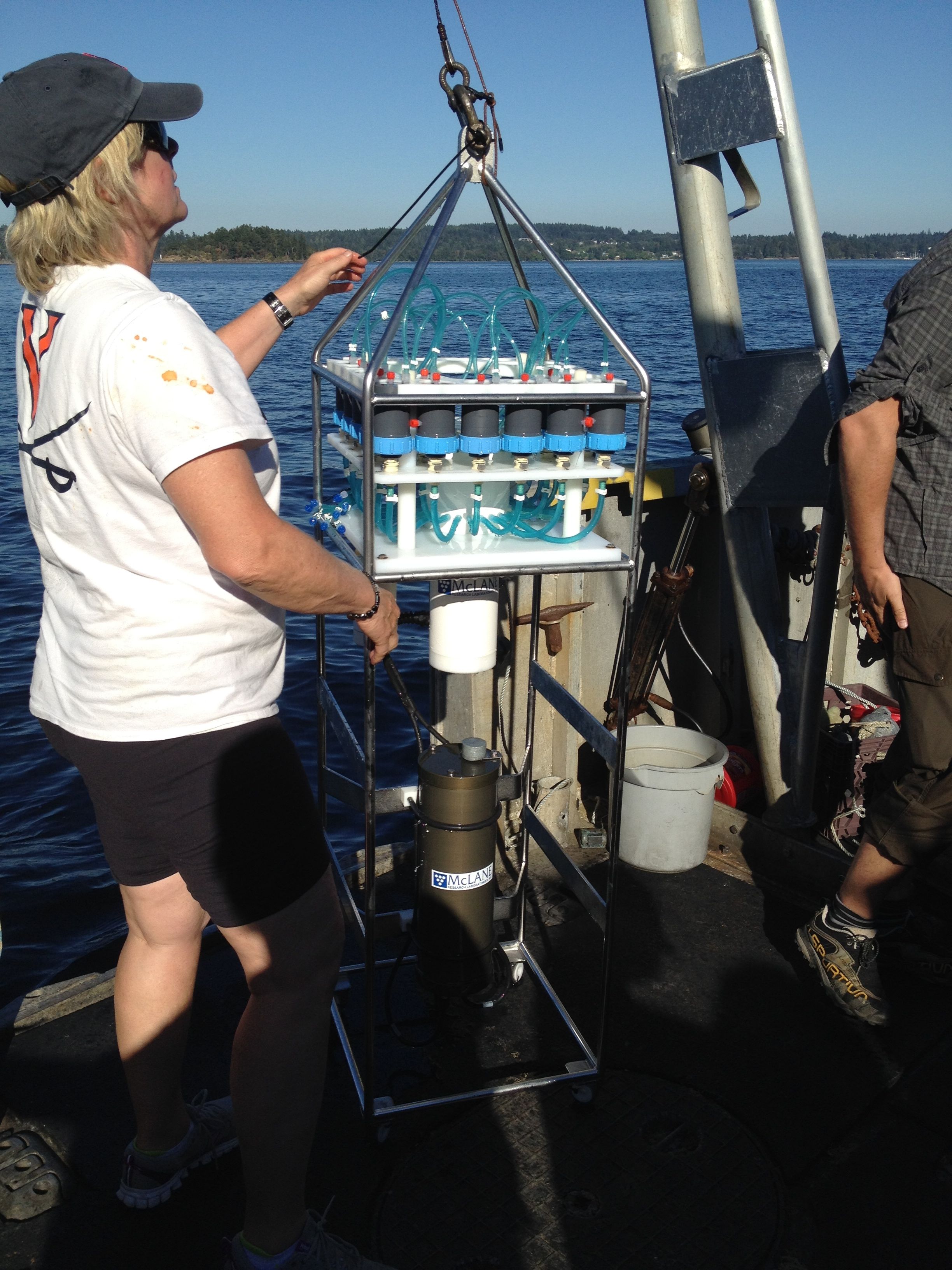
V. Edgcomb sampling in Saanich Inlet with S. Crowe and S. Hallam and SCOR Working Group.
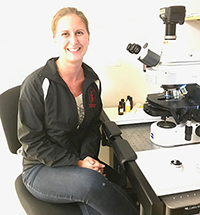
Taylor Sehein counting Syndiniales dinospores
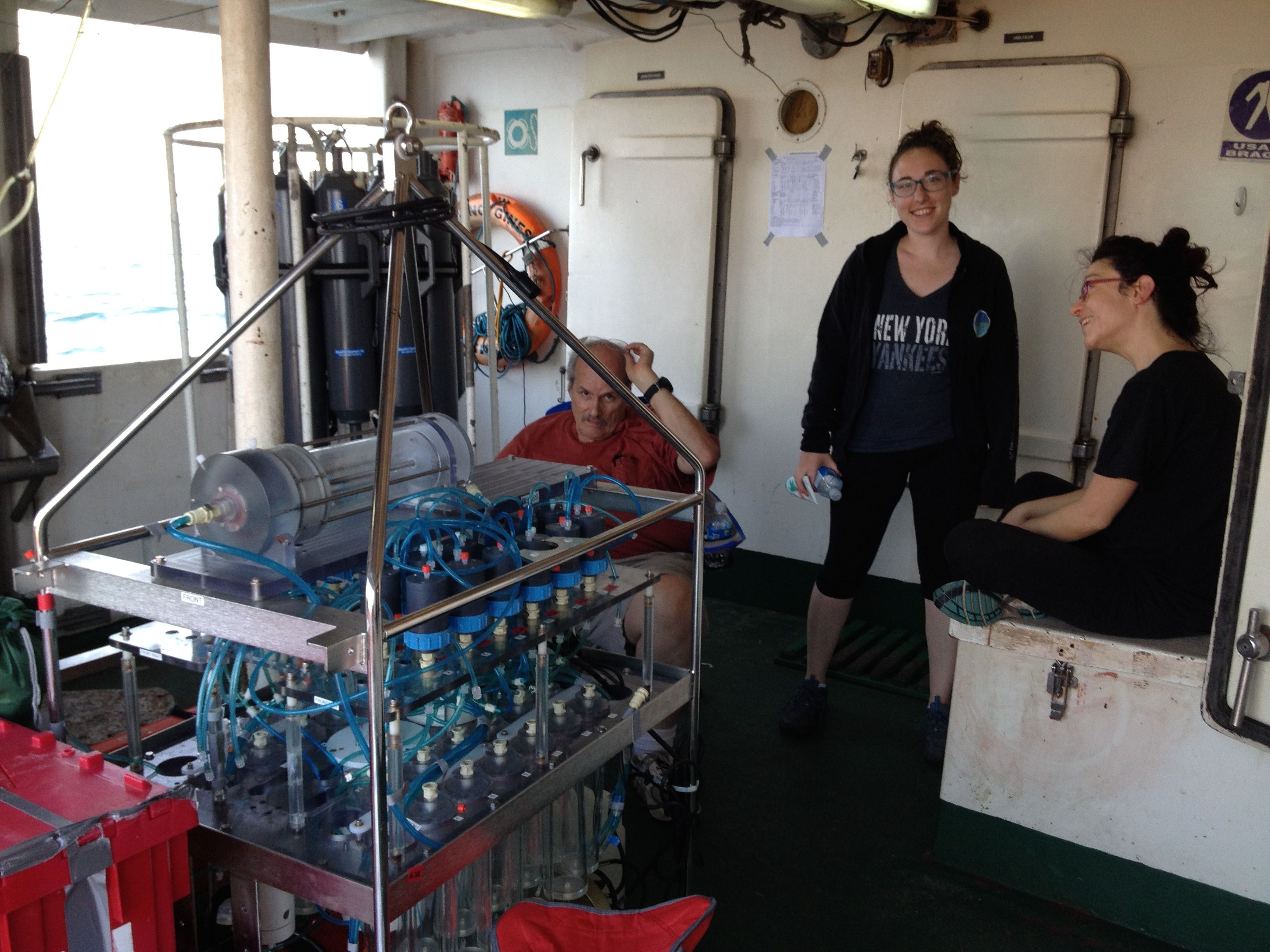
Elizabeth Suter (Stony Brook University), Maria Pachiadaki (WHOI) and Craig Taylor (WHOI) on the R/V Hermano Gines, Cariaco Basin.
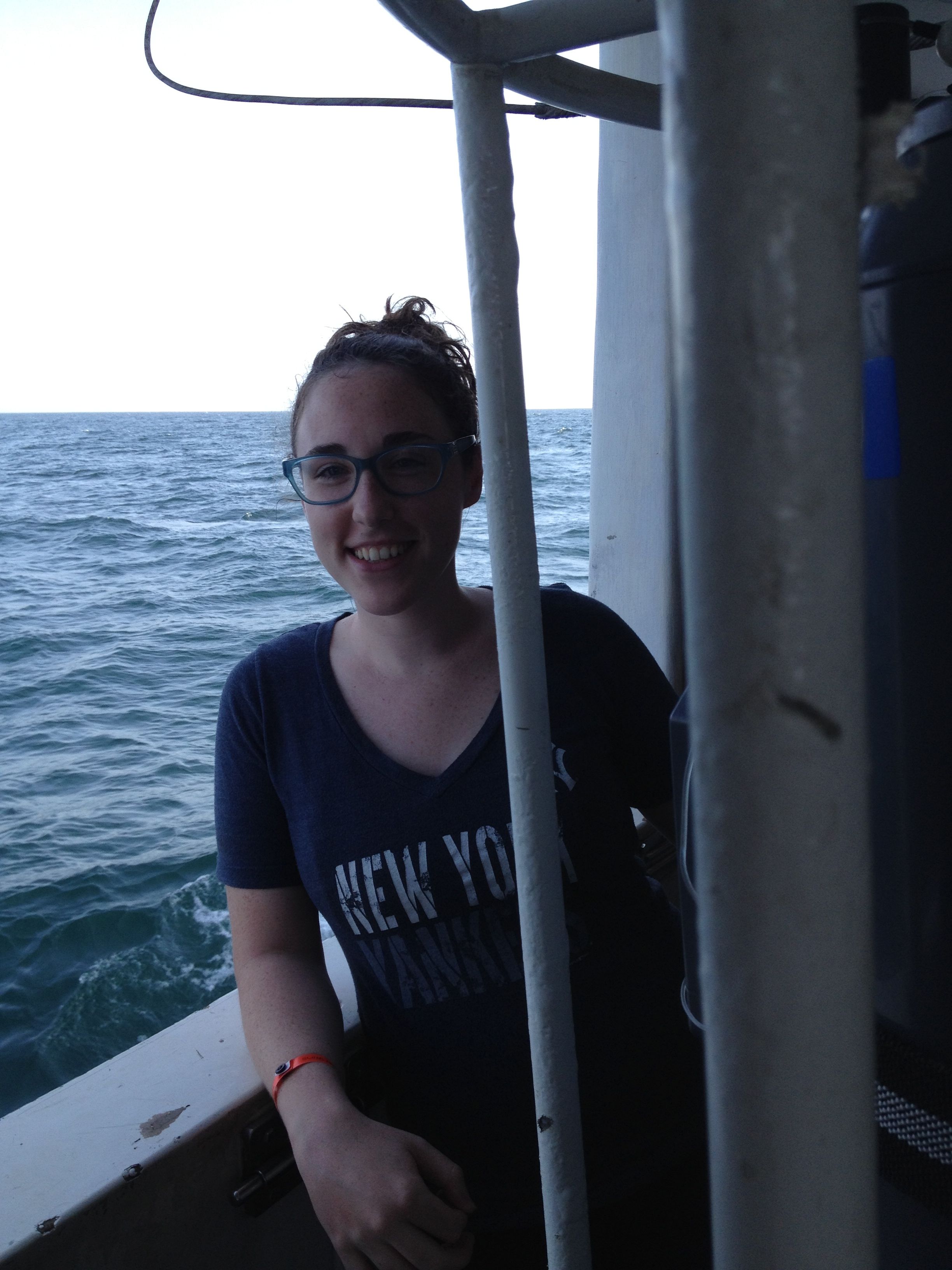
Liz Suter (Stony Brook University), Cariaco Basin 2014.
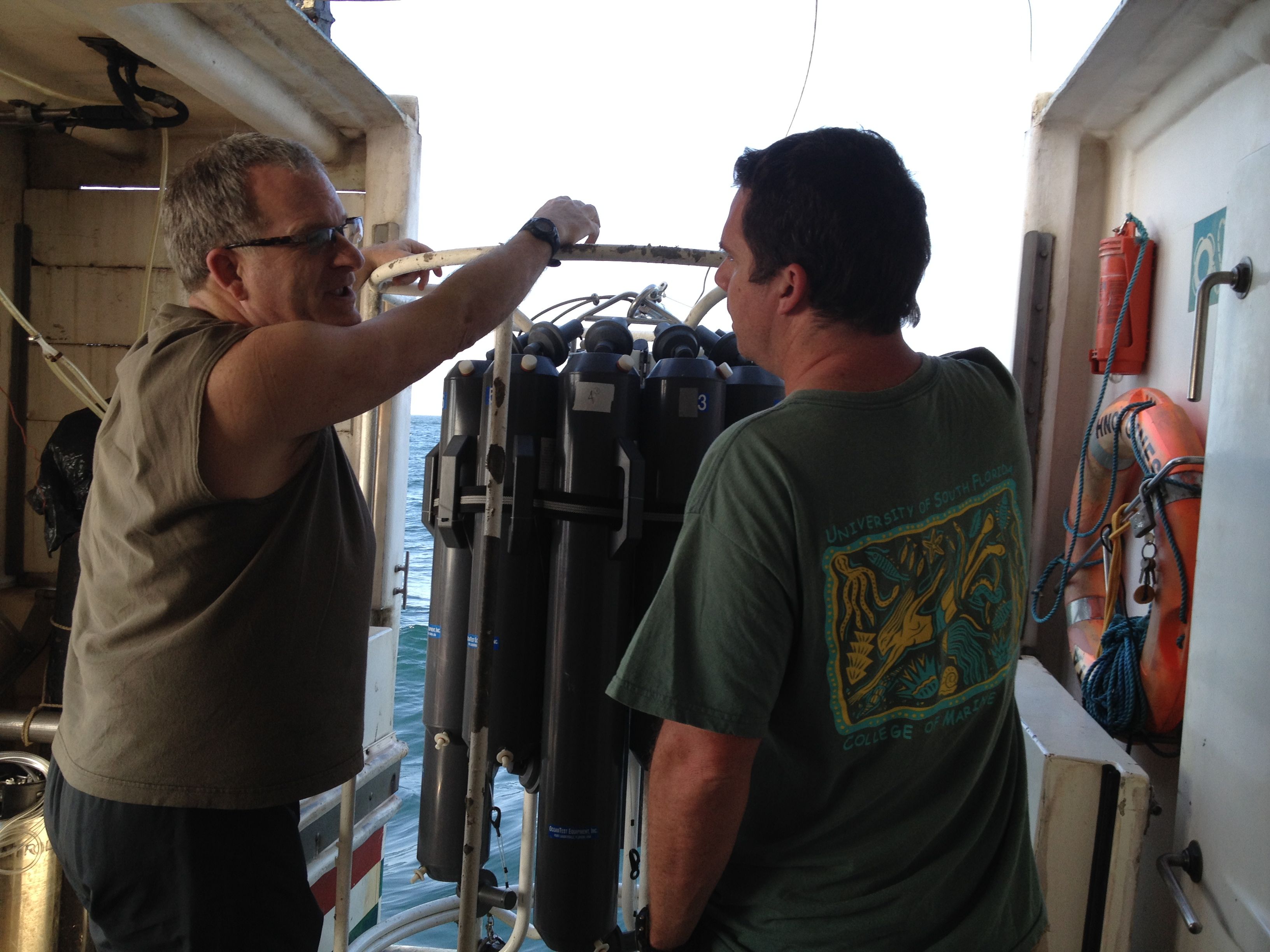
Gordon Taylor (Stony Brook University) and Enrique Montes Herrera (U. Southern Florida), Cariaco Basin.
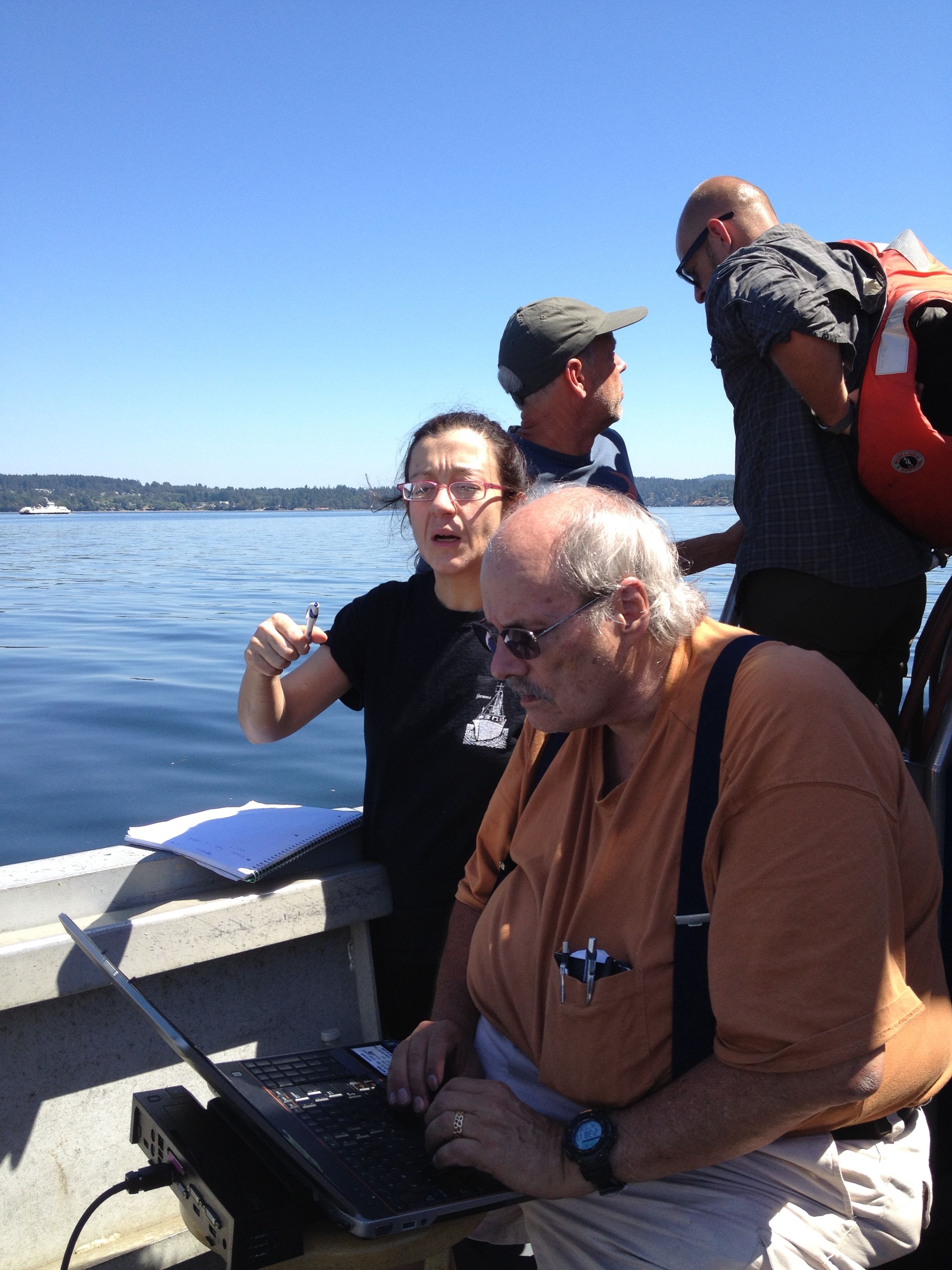
Maria Pachiadaki and Craig Taylor program the IPS Sampler prior to deployment.